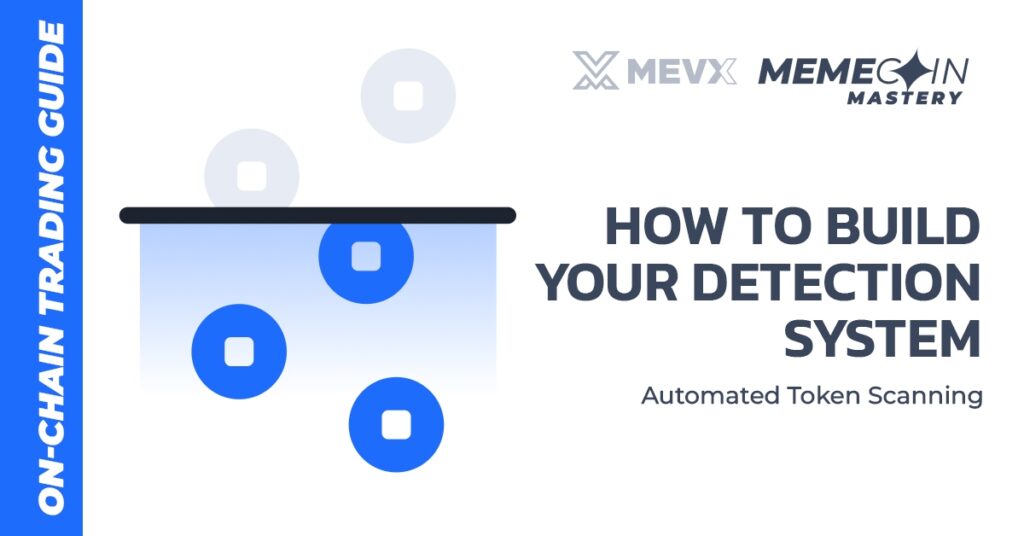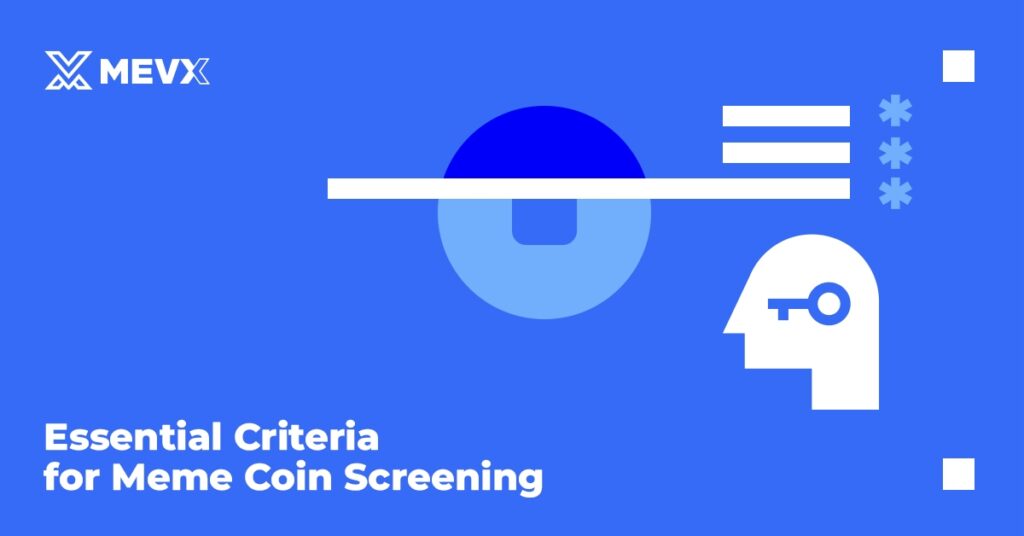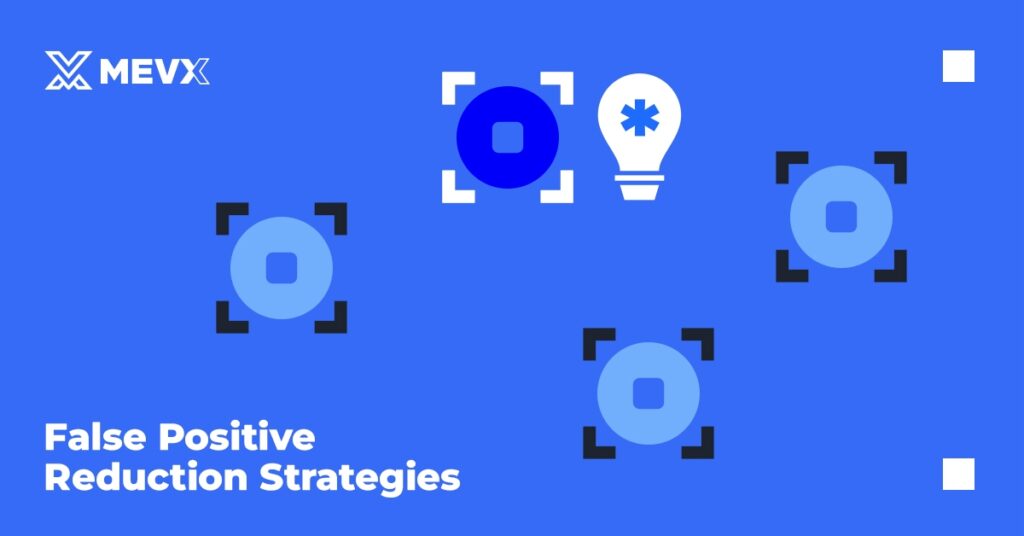Manual token discovery becomes impossible when hundreds of new meme coins launch daily across multiple chains. Professional traders rely on automated token scanning systems to identify promising opportunities while filtering out obvious scams and low-potential projects. This guide will teach you how to build your detection system.

The Foundation of Effective Token Scanning
Automated token scanning transforms the overwhelming flow of new token launches into a manageable stream of pre-qualified opportunities. Rather than randomly discovering tokens through social media or hoping to catch launches early, systematic token scanning ensures you evaluate every potentially valuable project within your defined criteria.
The optimal scanning system adapts to changing market conditions while maintaining consistent evaluation standards.
Essential Criteria for Meme Coin Screening
Liquidity and Market Cap Filters
- Initial Liquidity Thresholds: Set minimum liquidity requirements based on your position sizes. For small positions, $10,000-50,000 initial liquidity may suffice, while larger traders need $100,000+ to avoid excessive slippage.
- Market Cap Ranges: Define your sweet spot for market cap discovery. Many successful meme coin traders focus on $50,000-500,000 market cap ranges where explosive growth remains possible, but some validation has occurred.
- Liquidity-to-Market Cap Ratios: Screen for healthy ratios that indicate sustainable trading. Ratios below 0.1 often signal insufficient liquidity for safe trading, while ratios above 0.5 may indicate artificially inflated liquidity.

Token Contract Security Screening
- Mint Authority Verification: Automatically flag tokens where mint authority hasn’t been revoked, indicating potential for supply manipulation.
- Freeze Authority Checks: Identify tokens with freeze capabilities that could prevent selling, a common rug-pull mechanism.
- Ownership Renunciation: Verify whether contract ownership has been renounced or transferred to secure governance mechanisms.
- Code Similarity Analysis: Compare new token contracts against known malicious patterns and legitimate template contracts.
Distribution and Holder Analysis
- Holder Count Minimums: Set thresholds for minimum unique holders to ensure some community adoption has occurred.
- Top Holder Concentration: Automatically calculate and filter based on top holder percentages and distribution metrics.
- New vs. Established Holder Ratios: Analyze whether growth comes from new market participants or existing wallet recycling.
Advanced Scanning Parameters and Filters
Social Signal Integration
- Social Media Mentions: Track Twitter, Telegram, and Discord activity levels relative to token age and market cap.
- Engagement Quality Metrics: Distinguish between organic engagement and bot-driven social activity through pattern analysis.
- Influencer Attention: Monitor whether legitimate crypto influencers have mentioned or engaged with the project.
Transaction Activity Screening
- Trading Volume Velocity: Measure trading volume relative to token age to identify organic growth versus artificial pump patterns.
- Transaction Diversity: Analyze transaction size distribution to ensure diverse participant engagement rather than bot-dominated trading.
- Geographic Activity Distribution: Screen for global vs. regionally concentrated activity patterns.
Technical Health Indicators
- Price Stability Metrics: Filter tokens showing extreme volatility that may indicate manipulation or instability.
- Liquidity Depth Analysis: Evaluate order book depth and price impact calculations for different trade sizes.
- DEX Integration Status: Verify listing status across major DEXs and aggregator compatibility.
False Positive Reduction Strategies
Multi-Layer Validation Systems
- Confirmation Requirements: Require multiple positive signals across different categories before flagging tokens as opportunities.
- Time-Delayed Verification: Implement cooling periods where tokens must maintain positive metrics over time before qualifying.
- Community Verification: Cross-reference automated findings with community sentiment and organic discovery patterns.

Dynamic Threshold Adjustment
- Market Condition Adaptation: Adjust screening criteria based on overall market volatility and meme coin sector performance.
- Success Rate Monitoring: Track which screening criteria correlate most strongly with profitable discoveries and weight accordingly.
- Competitive Analysis: Monitor what types of tokens other successful traders are discovering and adjust filters to capture similar opportunities.
Noise Reduction Techniques
- Duplicate Detection: Identify and filter out copycat tokens and minor variations of existing projects.
- Spam Pattern Recognition: Develop filters for common spam tactics like sequential character names or suspicious contract deployment patterns.
- Quality Score Weighting: Create composite scoring systems that weight different positive and negative indicators rather than using binary pass/fail criteria.
Backtesting Scan Effectiveness
Historical Performance Analysis
- Discovery Timing Evaluation: Analyze how early your scanning system would have identified historically successful meme coins.
- False Positive Rate Calculation: Measure the percentage of flagged tokens that failed to meet success criteria over various timeframes.
- Profitability Simulation: Run historical simulations to estimate the profitability of trading decisions based on scanning system outputs.
Continuous System Optimization
- Parameter Sensitivity Testing: Systematically adjust individual parameters to identify optimal threshold settings.
- Market Cycle Adaptation: Analyze how system performance varies across different market conditions and adjust accordingly.
- Comparative Analysis: Test your system against simple alternatives (random selection, social media following) to validate added value.
Implementation Architecture
Data Source Integration
- Real-Time Token Launch Monitoring: Connect to multiple data feeds, including DEX deployment events, new pair creation notifications, and token registry updates.
- Social Media API Integration: Implement automated monitoring of relevant social platforms with keyword filtering and sentiment analysis.
- Cross-Chain Data Aggregation: Build systems that can monitor token launches across multiple blockchains simultaneously.
Alert System Design
- Priority Classification: Develop tiered alert systems that distinguish between high-priority opportunities and lower-confidence discoveries.
- Multi-Channel Notifications: Implement alerts across multiple channels (email, SMS, Discord, Telegram) based on opportunity priority.
- Alert Fatigue Management: Design systems that prevent notification overload while ensuring critical opportunities receive attention.
Performance Monitoring
- System Uptime Tracking: Monitor scanning system reliability and implement failover mechanisms for critical components.
- Detection Latency Measurement: Track how quickly your system identifies opportunities compared to market discovery.
- Resource Usage Optimization: Balance scanning thoroughness with computational efficiency and cost management.
Scaling Your Token Scanning Operations
Automation Levels
- Basic Automation: Simple filtering based on predetermined criteria with manual review of results.
- Advanced Automation: Multi-factor analysis with confidence scoring and automated position sizing recommendations.
- Full Automation: End-to-end systems that identify, analyze, and potentially execute trades based on scanning results.
Integration with Trading Strategy
- Risk-Adjusted Opportunity Sizing: Automatically calculate appropriate position sizes based on scanning confidence levels and portfolio risk parameters.
- Diversification Management: Ensure scanning systems support portfolio diversification goals rather than concentrating in similar opportunities.
- Exit Strategy Preparation: Build scanning systems that also monitor exit signals for discovered opportunities.
Building an effective automated token scanning system requires balancing sophistication with practicality. Start with basic filtering criteria and gradually add complexity as you understand which factors most strongly predict success in your trading style.
The most successful traders treat their scanning systems as evolving tools that continuously improve through systematic testing and refinement.
You don’t need a perfect scanner; you need one that gives you a consistent edge. Start with a simple framework, test it, then iterate. Over time, your automated token scanning system will become the foundation of your meme coin alpha engine.
In this noisy market, smart detection is survival. Build your scanner to see what others can’t, and you’ll always be ahead of the herd.
Don’t forget to follow the MevX blog for more articles on the on-chain trading guide.
Share on Social Media:
